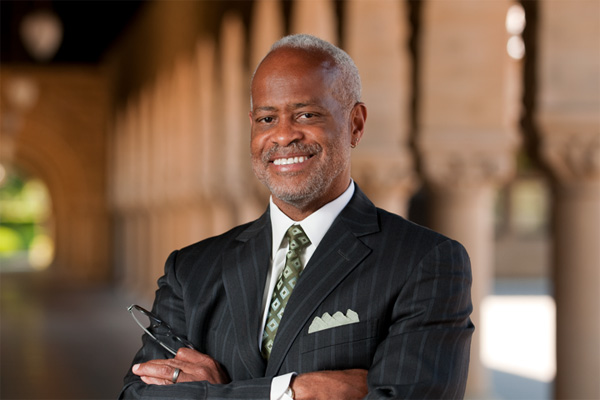Stanford adds two new freshman living, learning programs
ITALIC, which will focus on the arts, and SIMILE, which will concentrate on science, will open in the fall, offering freshmen a new way to combine living and learning in a thematic, residence-based educational program while meeting undergraduate requirements.
This fall, Stanford will add two new integrated living and learning programs for freshmen – one focused on the arts and the other on science.
The programs will join the longstanding Structured Liberal Education Program (SLE) as integrated learning environment (ILE) options for new students. Both new programs sport catchy acronyms. ITALIC stands for Immersion in the Arts: Living in Culture, and SIMILE is short for Science in the Making: Integrated Learning Environment.
ILEs offer students the chance to combine residential and educational experiences in a theme-based program while meeting undergraduate education requirements. For instance, SLE, created in 1974 and located in Florence Moore Hall, boasts a curriculum based on a great books approach.
Both new programs, which are now open for enrollment for incoming freshmen, will be housed in Burbank within the Stern residential complex. Assistant directors overseeing the programs will maintain offices in the residence. All of the lectures and sections will take place there. Officials hope the programs will attract 41 to 45 students each in the first year.
"I'm excited that we can offer some different possibilities for students to fulfill undergraduate requirements," said Vice Provost for Undergraduate Education Harry Elam. "I am confident these two programs will thrive. I know how hard the faculty leadership and teams have been working to make these a really vibrant experience for students."
Boldly ambitious initiative
ITALIC is a "boldly ambitious initiative to map the workings of humankind and the development of mind in the world through the arts," according to faculty director Janice Ross, professor of theater and performance studies. Other faculty members involved in ITALIC are Professors Jonathan Berger, music, and Scott Bukatman, art and art history.
Ross said ITALIC will offer "a deeper understanding of what makes us who we are and also open dialogues with other areas of study – conversations about how artists and their approach to making meaning in the world enriches scientific, psychological and technical discovery."
The interdisciplinary curriculum will focus on what Ross called "real-world collisions" of art, medicine, biology, politics and society in the last 300 years.
"ITALIC seeks to emphasize the centrality of the arts in our collective understanding of the world we are given – and in our ability to transform the world," Ross said. "Our teaching team – with expertise in film, comics, music, dance, performance studies, playwriting, poetry, architecture, the visual arts and community arts – seeks to give students a sense that creativity and critical analysis are crucial skills in any profession."
Proposed renovations within Burbank call for a portion of Stern Dining to be converted into a classroom/performance space that would seat about 50 students. Residential & Dining Enterprises also proposes a new visual arts room, music practice room, improvisation room and two seminar rooms.
Great books approach to science
The goal of SIMILE is "to combine a 'great books' approach to science, technology and medicine – because students should read Euclid, Newton and Darwin in the original rather than in a science textbook – with a more contemporary perspective on the materials from which knowledge is made," according to history Professor Paula Findlen, who is faculty director for SIMILE.
Findlen will be joined on the SIMILE faculty by Robert Proctor, professor of history; Tom Mullaney and Jessica Riskin, both associate professors of history; and Reviel Netz, professor of classics.
"The history of science, technology and medicine is fundamentally the story of the global evolution of human ideas, experiences, practices and inventions," Findlen said. "Engaging in this subject from the stone axe to Facebook gives students an opportunity to reflect on the ongoing struggle to interpret and shape the world around us."
Findlen said many of the SIMILE faculty have enjoyed guest lecturing in SLE, making the opportunity to approach science in a similar way "irresistible."
Especially exciting, Findlen said, is the opportunity to collaborate with ITALIC, since both programs will be located in the same residence hall.
"Students will see each other every day, talking about what they're reading and doing over meals, and hopefully do a few things together that cross perceived boundaries," Findlen said.
SUES report recommendation
Increasing the number of ILEs and enhancing faculty involvement in residential education were among the recommendations in the January 2012 report of the Study of Undergraduate Education at Stanford (SUES). Members of SUES said in their report, "We believe that Stanford can and should develop additional 'integrated learning environments' for freshmen, broadly modeled on SLE, but organized around other themes."
Elam said the two new ILEs also received strong support from President John Hennessy.
Offering more dorm-based academic opportunities is also an objective of residential education, according to Deborah Golder, associate vice provost for student affairs and dean of residential education.
"We are looking to the launch of the new ILEs with great anticipation," said Golder. "The model brings together the strengths of many current residential programs – along with some new ideas – to create another vibrant model for living and learning for Stanford freshmen."
Golder added: "The ILEs will have the richness of sharing coursework with fellow residents while living in the center of our all-frosh communities. It is particularly exciting to have ITALIC and SIMILE in the same house. Living together will allow for innovative intersections between students in both programs."


Share This Story